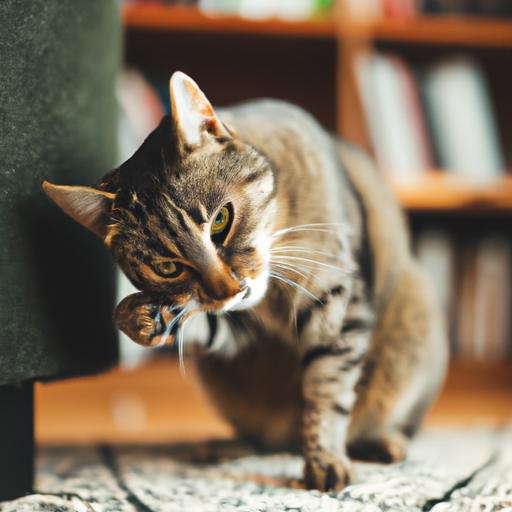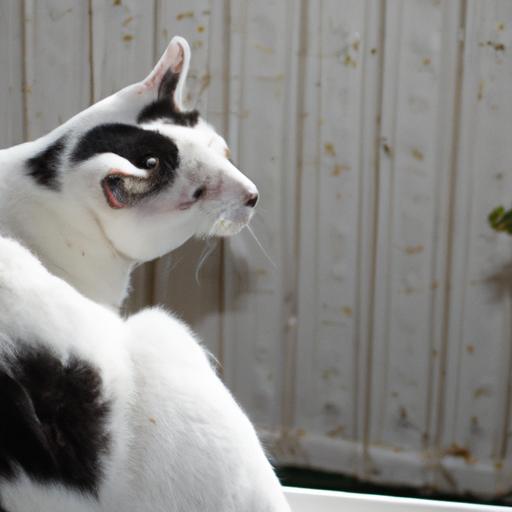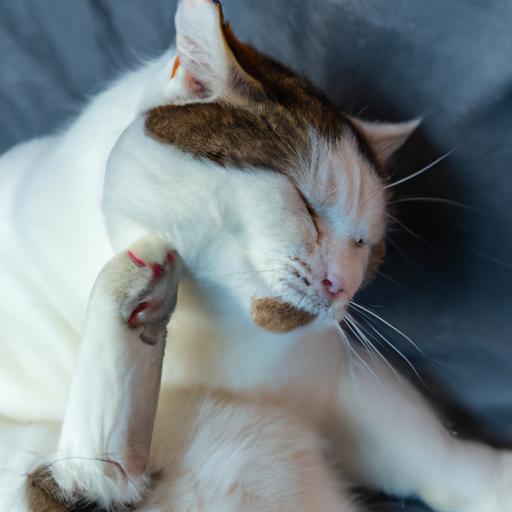Understanding Cat Behavior
Cats are fascinating creatures with unique behaviors that sometimes leave us perplexed. To truly address the issue of cats scratching under their chin, it is crucial to understand their natural instincts and behaviors. By delving into the world of feline grooming, we can shed light on why this behavior occurs and how it contributes to their overall well-being.
Natural Grooming Instincts
Grooming is an inherent behavior in cats that serves multiple purposes. It helps them maintain their fur’s cleanliness, regulate body temperature, and even establish social bonds. Cats are meticulous self-groomers, spending a significant portion of their day licking and nibbling different parts of their bodies. This grooming routine is not merely about aesthetics; it is deeply ingrained in their DNA.
The Significance of Scratching Under the Chin
Scratching under the chin is an integral part of a cat’s grooming routine. By reaching their chin, they can access areas that are hard to reach with their tongue alone. This behavior allows them to remove dirt, debris, and excess oil accumulated in that area. Additionally, cats have scent glands located under their chin, and scratching helps them mark their territory with their unique scent.
Understanding the significance of scratching under the chin is crucial for cat owners. It indicates that your feline companion is engaging in a natural and necessary behavior. It also reflects their desire for cleanliness and self-maintenance. By acknowledging and appreciating this behavior, we can better care for our furry friends and ensure their overall well-being.
Remember, scratching under the chin is a normal behavior for cats, but excessive scratching or skin irritation may indicate an underlying issue. In the following sections, we will explore the various reasons behind this behavior and discuss effective ways to address it.
Reasons Why Cats Scratch Under the Chin
Cats are fascinating creatures with unique behaviors, and one such behavior is scratching under their chin. While it may seem curious why they engage in this specific action, there are several reasons behind it. Understanding these reasons can help us better comprehend our feline friends and address their needs effectively.
a) Marking territory: Cats have scent glands under their chin, and scratching helps them mark their territory.
When a cat scratches under its chin, it releases pheromones from the scent glands located in that area. These pheromones act as a territorial marker, sending a message to other cats in the vicinity. By scratching, cats assert their ownership over a particular space or object, establishing boundaries and defending their territory.
b) Satisfying itchiness: Scratching under the chin helps cats alleviate itchiness caused by various factors.
Just like humans, cats can experience itchiness for various reasons. Scratching under the chin provides them with relief by targeting the itchy areas. It could be due to dry skin, allergies, parasites, or even a reaction to certain irritants. By scratching, cats can alleviate discomfort and soothe the affected areas.
c) Social interaction: Cats may scratch under their chin to communicate and bond with their owners or other cats.
Scratching under the chin can also serve as a means of social interaction for cats. When a cat rubs its chin against a person or another cat, it is a friendly gesture, often accompanied by purring and gentle headbutts. This behavior allows cats to leave their scent on the person or cat, marking them as part of their social circle and strengthening their bond.
Understanding these reasons behind cats scratching under their chin enables us to respond appropriately to their needs. Whether it’s providing appropriate scratching surfaces, addressing any underlying skin issues, or simply reciprocating their affectionate gestures, we can ensure our furry companions are happy and content.
How to Address Excessive Scratching Under the Chin
Cats scratching under their chin is a natural behavior, but when it becomes excessive, it can be a cause for concern. Luckily, there are several practical tips and techniques that can help you manage and address this behavior effectively.
a) Regular grooming: Reduce the need for excessive scratching
Regular grooming is essential to keep your cat’s chin clean and reduce the need for excessive scratching. Brush or comb your cat’s chin gently to remove any dirt or debris that may be causing itchiness. This not only promotes good hygiene but also helps prevent skin irritation and discomfort.
b) Environmental enrichment: Provide alternatives for scratching
Offering appropriate scratching options can redirect your cat’s scratching behavior away from their chin. Invest in a variety of scratching posts, mats, or toys that are specifically designed for cats. Place these items strategically around your home to encourage your cat to use them instead of scratching their chin excessively. Experiment with different materials and textures to find what your cat prefers.
c) Addressing underlying issues: Consult a veterinarian
If your cat continues to excessively scratch under their chin despite your efforts, it may be necessary to consult a veterinarian. Excessive scratching can sometimes be a symptom of underlying medical conditions, such as allergies or skin infections. A veterinarian can conduct a thorough examination to rule out any potential health issues and provide appropriate treatment or medication if necessary.
Remember, every cat is unique, and what works for one may not work for another. Be patient and persistent in finding the best approach to address your cat’s excessive scratching under the chin. By implementing these tips and seeking professional help when needed, you can help your feline friend find relief and maintain optimal well-being.
Training and Positive Reinforcement
Cats, being intelligent creatures, can be trained to redirect their scratching behavior. By employing positive reinforcement techniques, you can effectively discourage excessive scratching under the chin. Let’s explore the significance of training and some effective methods to achieve desired results.
Importance of Training Cats
Training your cat not only helps manage their scratching behavior but also strengthens the bond between you and your feline companion. Redirecting their scratching habits can prevent furniture damage and ensure a harmonious living environment. With patience and consistency, training can be a rewarding experience for both you and your cat.
Positive Reinforcement Techniques
Positive reinforcement is a highly effective method to train your cat. By rewarding desired behaviors, you can encourage them to engage in more appropriate activities. Here are a few techniques to help you achieve this:
1. Rewards and Treats
Using treats as rewards is a common and effective way to reinforce desired behavior. Whenever your cat refrains from scratching under the chin inappropriately, offer them a small treat and praise them. This positive association will motivate them to repeat the desired behavior.
2. Clicker Training
Clicker training is another popular technique that utilizes a small handheld device called a clicker. The clicker emits a distinct sound when pressed, which you can pair with the desired behavior. For example, each time your cat refrains from scratching under the chin inappropriately, click the device and immediately reward them with a treat. This helps them associate the sound with the action and reinforces the desired behavior.
3. Environmental Enrichment
Providing your cat with a stimulating environment can also aid in redirecting their scratching behavior. Offer interactive toys, scratching posts, or cat trees to give them alternative surfaces to scratch. Encourage their use by sprinkling catnip or attaching toys to the scratching surfaces.
Remember, consistency and patience are key when training your cat. It may take time for them to adapt to the new behavior, so be persistent and offer positive reinforcement consistently. With time, your cat will learn to redirect their scratching instincts and indulge in appropriate activities.
Stay tuned for the next section where we will discuss how to effectively address excessive scratching under the chin if training alone doesn’t yield desired results.



